Last week I posted Early Trombone and the Dance, focusing on the dance role of the alta capella, of which the trombone was a regular member. This follow-up post deals with the trombone and dance in more recent trombone history. Once again, I have taken highlights from entries and images found in the Trombone History Timeline. Like the history of the trombone in general, the trombone’s history in dance is long and varied. Entries range from a Latin American wedding dance to an Austrian street dance to a French military dance. My favorite entry in this set is probably the very first, featuring the complaint that “almost no dance can be played without a bass trombone cavorting about.” There are at least two additional dance genres that could be added to those represented below: ballets and jazz dance bands. For all references, see the Trombone History Bibliography.
_________________________________
1803—Leipzig, Germany: A writer for the Allgemeine musikalische Zeitung says, “[The trombone] has spread all over Germany since the days of the French occupation, via the French military bands and the modern German military bands, which are modeled after them, so that, for example, in the vicinity of Leipzig almost no dance can be played without a bass trombone cavorting about” (Lewis, Gewandhaus).
1820s—Stockholm, Sweden: Bernhard Crusell writes 10 military marches and dances for a brass ensemble consisting of keyed bugle, 3 horns, 2 natural trumpets, and trombone. This instrumentation, known as the Hornseptett, soon becomes standard in Swedish military music (Wallace, Brass Solo 241).
1835—New Orleans, Louisiana: At the St. Charles Theater, when a popular French ballerina dances a new ballet, “The Revolt of the Harem,” she is accompanied by Felippe Cioffi “in a grand trombone solo by Weber” (Kmen 140, 211). A newspaper advertisement for a “grand ballet dance” at the St. Charles Theatre mentions a trombone solo by Felippe Cioffi: “In this beautiful dance Signior Cioffi will accompany Madamoiselle Celeste in a grand Trombone Solo. The whole of the music by Carl Maria von Weber” (New Orleans Commercial Bulletin).
1843—Russia: A lithograph by Rudolf Joukowsky titled Kosakentanz depicts a lively “Cossack Dance.” The orchestra providing the music includes what appears to be a trombone with a slide extension handle (see below detail and full image beneath that; public domain) (Berlin, Archiv für Kunst und Geschichte; Salmen, Tanz im 19 75).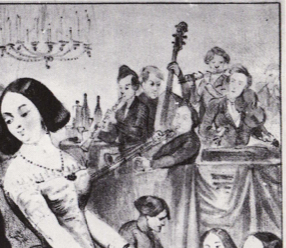
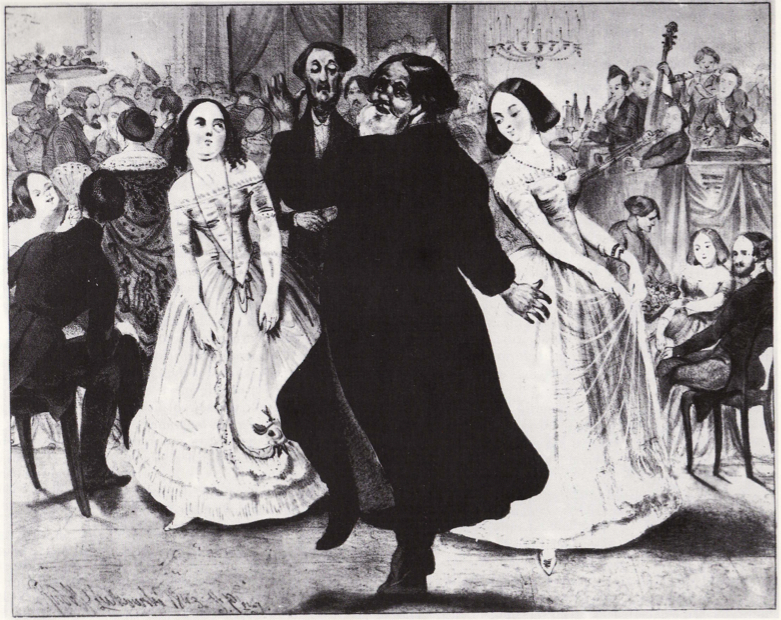
c. 1850—Austria: Artist Carl Schild depicts a group of youth in a street dance in his lithograph, Pannkooken-Musikanten. The brass quintet providing the music includes a trombone (see below image; public domain) (Salmen, Tanz im 19 56).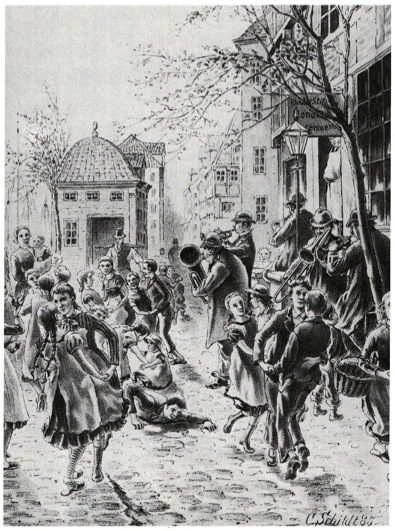
1853—Paris, France: The illustrated newspaper L’Illustration publishes a graphic, “La danse aux camps,” depicting a military celebration with a four-man dance band in the upper-left that includes what appears to be a rear-facing trombone (see below image; public domain) (L’Illustration, vol. 22, July 23, 1853, p. 64).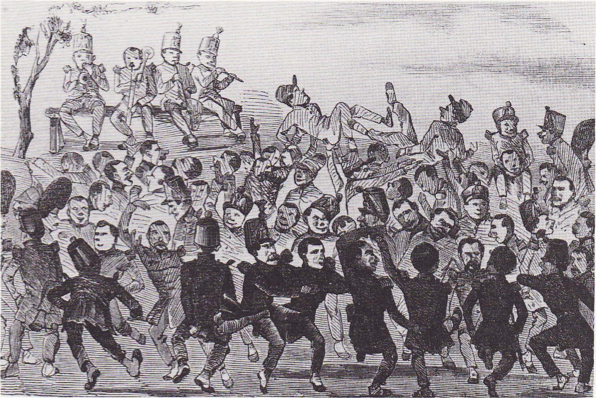
c. 1860—Peru: Artist Pancho Fierro depicts a trombonist performing with a wind band for a Peruvian wedding celebration in Fiesta de Matrimonio (see below detail and full image beneath that; public domain) (Lavalle 38).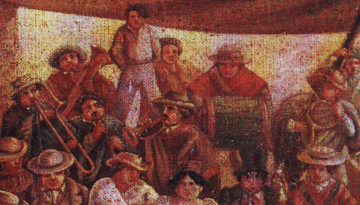
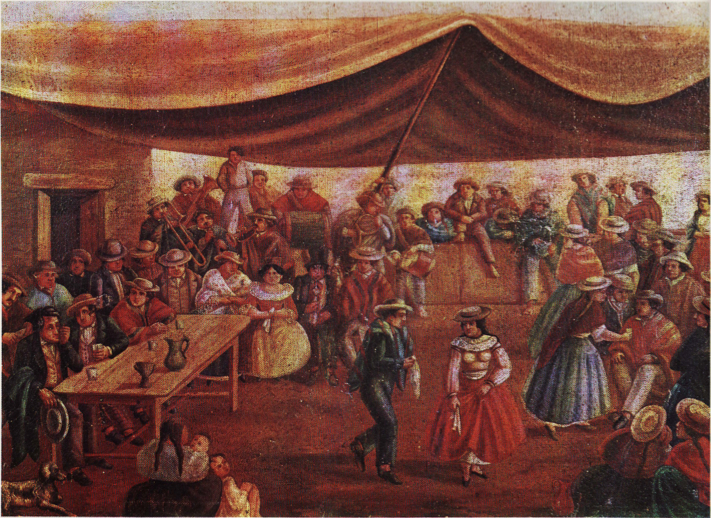
1869—Germany: An anonymous depiction of a ball includes 7 musicians, probably Stadtpfeifer, performing dance music from a loft (see below detail and full image beneath that; public domain) (Eisfeld, Museum Otto Ludwig; Salmen, Tanz im 19, 129).

1873—Paris, France: Christmas Eve in a Spanish Church, a print after Miranda appearing in the Paris illustrated newpaper, L’Illustration, features a buccin, or trombone with a bell in the shape of a dragon’s head (see below image; public domain) (L’Illustration, January 4, 1873, pp. 10-11).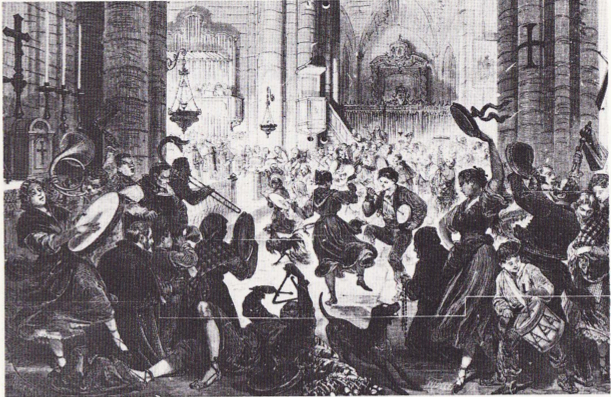
1883—Pitanguy, Brazil: Englishman Hastings Charles Dent visits church near town of Pitanguy in Minas Gerais, Brazil, and is entertained with music that includes “guitar, trombone and concertina.” He asks the priest “why they had no sacred music, only dance music in church; he said the people were not educated up to it yet, but he hoped in time to introduce it.”
IPL T20.
Markedly well executed piece of writing!!!